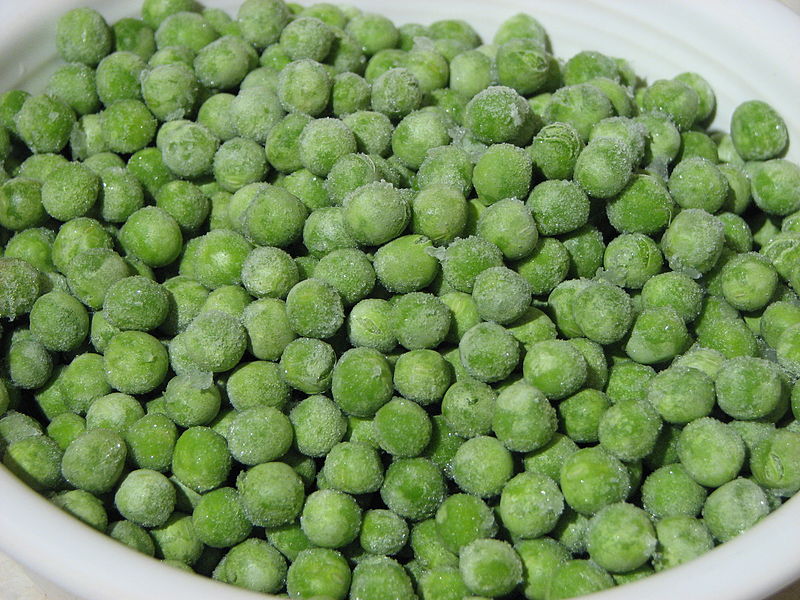Downloads:

Cooling and refrigerating
Freezing
Keywords
Cooling, refrigerating, freezing, storage, temperature, conservation
Level

Cooling and refrigerating
Cooling - the cooling process consists of lowering the temperature of the food ingredients to 4°C before being properly stored in the refrigerator.
Refrigerating - the refrigeration process consists of storing food ingredients in the refrigerator between 0ºC and 4ºC, according to their different categories.
Temperatures, best refrigeration practices, and packaging:
• Whenever possible, food ingredients should be stored in independent refrigerators and by categories: meat, fish, vegetables and fruit, dairy products, tubers, pre-prepared and pre-cooked.
• If this is not possible, food ingredients should be distributed in the refrigerator according to the temperature in each area, avoiding overfilling the compartments in order to allow the circulation of cold air. In most refrigerators, the highest temperature is on the top shelves, and the lowest temperature on the bottom shelves.
• Food packaging must comply with HACCP* regulations.
Generally, recommendations indicate:
- to place dairy products, sauces and cooked foods on the shelf of the refrigerator nearest to the freezer;
- to place cold cuts, prepared salads, vegetables, fruit and desserts on the middle shelves of the refrigerator;
- to store raw meat and fish on the shelf of the refrigerator farest to the freezer; this is also the ideal place to start the defrosting process.
* Hazard Analysis and Critical Control Point
Freezing
Freezing - the freezing process consists of subjecting food ingredients to negative temperatures.
Temperatures, best freezing practices, and packaging:
• Freezing temperatures occur normally between -12°C and -18°C. These temperatures should reach the center of the product.
• Food ingredients to be frozen must be prepared in advance and packaged by categories. In the freezing packaging process, they may all be in the same physical space as the temperature is constant. Whenever possible, the same order presented in the refrigeration should be followed.
• When freezing, we should verify the expiration date and check the integrity of the package.
• The most used process at home is slow freezing, which leads to the formation of large ice crystals; in a professional environment, the process is quicker, resulting in smaller ice crystals. Respecting the speed of the freezing process will ensure that the characteristics of food ingredients do not suffer significant changes.
• To avoid cross-contamination, the refrigerator should be cleaned regularly, and a thorough cleaning should take place at least once a month.
Description
Labels
Benefits
The main benefits and advantages of refrigeration and freezing processes are:
• The possibility of selecting, preserving and preparing food ingredients for later consumption.
• Non-deterioration of the product, maintaining its nutritional quality, preventing or reducing microbiological proliferation, and contributing to the health and well-being of consumers.
• Prolonging the shelf life of products, optimizing domestic and professional storage, and combating food waste.
• Effective management of space and time at domestic and professional levels.
• Good use of energy resources, managing the conditions of storage, temperature, and quality of the equipment.
Representative Products
The majority of the food products: raw (e.g. meat, fish, vegetables), pre-prepared (e.g. peeled carrots, chopped onion), pre-cooked (e.g. poached spinach, poached Brussels sprouts) and cooked (e.g. sautéed broad beans, bean stew, soup).
Risks
• Best practices recommend:
• Taking into account the validity of each food ingredient, and storing them accordingly (FIFO - first in, first out).
• Avoiding placing hot food in the refrigerator, as it increases the temperature inside the equipment. To cool the food more quickly, divide into small quantities and spread into different containers and/or leave the containers immersed in water and ice for a while. In a professional environment, use the chiller, but avoid adding food with different temperatures.
• Protecting food by placing it in suitable containers, ie., those that withstand negative temperatures (e.g. vacuum bags or suitable bags for freezing, stainless steel, and polycarbonate containers). Whenever possible, remove air from the bag or freezer containers.
• Checking that the storage temperature of frozen foods is not lower than -18ºC; regularly check the freezer control board to confirm if the temperature inside the refrigerator is correct, to avoid fluctuations and consequent degradation of the products.
• Removing, whenever possible, the box that contained the product, keeping the original label, and indicating the type of food and the respective freezing date.
• Discarding food presenting a grayish, yellowish or light brown color, as it is an indicative sign of frostbite.
• Defrosting the equipment regularly to avoid excessive energy consumption, loss of efficiency and useful space.
Further references
https://www.statefoodsafety.com/Resources/Resources/two-stage-cooling-process
https://www.fda.gov/consumers/consumer-updates/are-you-storing-food-safely
https://www.fsis.usda.gov/food-safety/safe-food-handling-and-preparation/food-safety-basics/freezing-and-food-safety
 Play Audio
Play Audio

